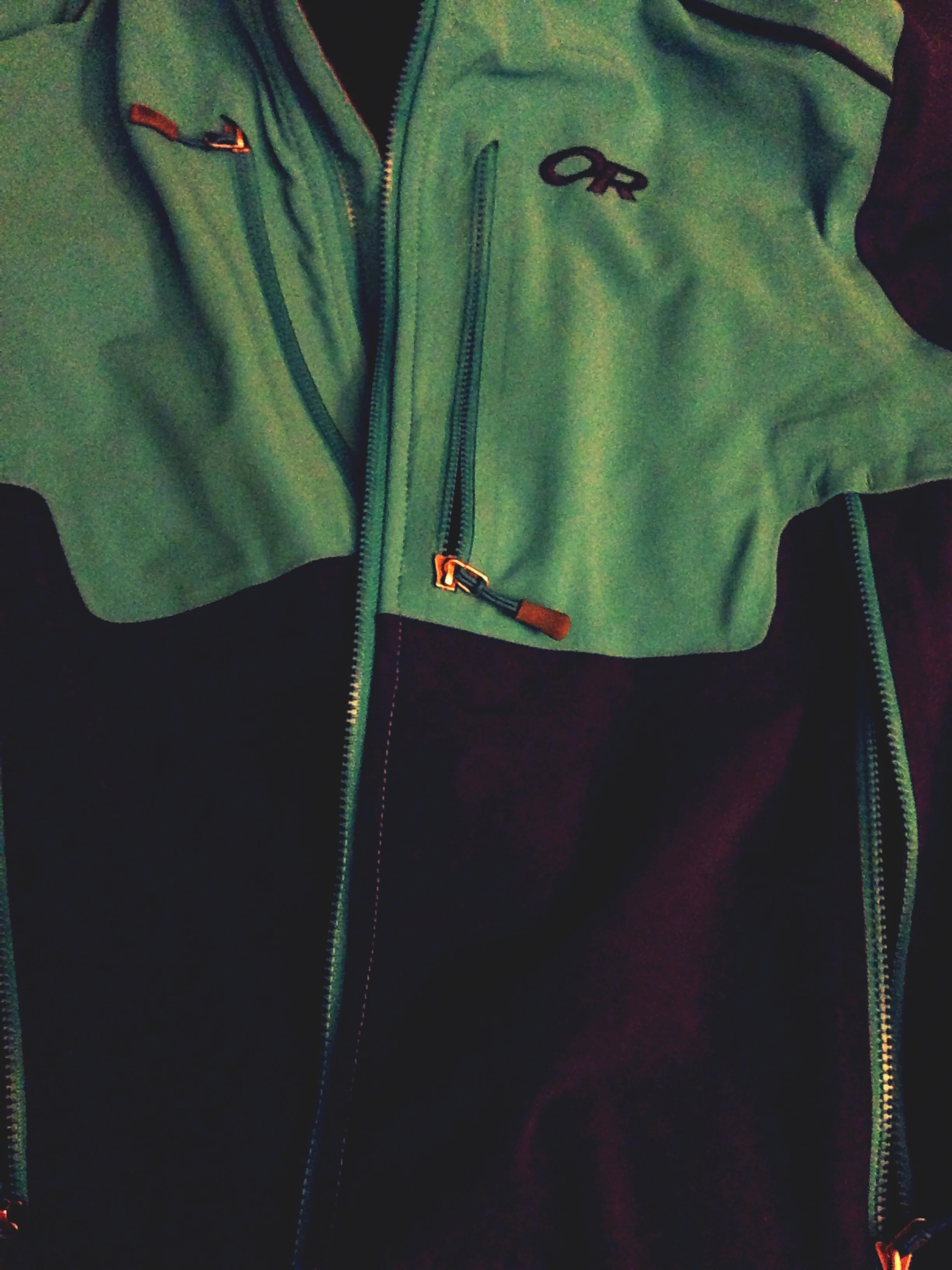The Valhalla Jacket in action in the Phoenix Area mountains on a blustery desert day.
So, long-time readers, I have some big news: this winter, I have been offered the opportunity to partner with Outdoor Research (“OR”) as part of their Outdoor Research Insight Lab (#ORInsightLab) initiative. Chances are if you follow me on Twitter, or listen to me on In Ice Axe We Trust, you already knew this, but as it’s still exciting to me, I wanted to announce it again. What this means is that OR has provided me with some of their gear to test; and in exchange, they are expecting some of my pithy insights as to how the gear performs in the field. This is win-win for everyone – I get to try new gear, which will prevent me from getting hypothermia from my old, patched up gear that has rips, tears, and marmot bite holes; OR gets to see how the gear performs when put through a Mad Max/Ninja Mountaineer lifestyle; and you, the reader get my insights on whether the gear works or whether the gear fails. If you know me, you know my reputation for honesty about wilderness conditions: if it’s dangerous, I let you know; if it’s safe I let you know; if it’s rated strenuous and it’s a cakewalk, I let you know; and on just about anything, I let you know. I’ll be applying this same rigorous filter to the gear; but in terms of full disclosure, I am testing this gear for OR, so as always – apply your own filter to what I say, even though you should always take my word verbatim. (Just kidding!)
Snow, ice, and wind up ~11,500+ in the Sierra Nevadas - but I'm nice and warm in my Valhalla Jacket.
One of the first pieces of gear I’ve been testing is the OR Valhalla Jacket. This is a lightweight jacket that is designed to be worn as atop a base layer alone; or as a mid-layer in colder conditions. The jacket is windproof; waterproof; and very lightweight. Personally, I think I could stop the review here as those three factors are huge positives in my book, but rather than let the jacket rest on those laurels, and on how it looked on me when I wore it around my house, I took it out into the mountains to see how it held up. My first trial run of the jacket was in the John Muir Wilderness a couple weeks ago when I climbed up to the Meysan Lakes. The conditions? Sunny, 20-35 degrees, with patchy snow and ice. Throughout the day, the jacket kept me very warm as I covered over thirteen miles of distance and gained over 3,500 feet of elevation. At times when I was hot, I was able to utilize one of the many vent zips that OR has put on the jacket to keep my core temperature level.
After this trial run, I was impressed. Even more impressive was the fact that when I checked the jacket over that night, there were no rips or dings from the brush, rock, and other obstacles I had to pass through during the cross-country sections I had traversed. But – rather than let the jacket rest on those laurels, I took it out again this last weekend when I was doing the Phoenix Summit Challenge. The conditions? Rain, wind, and variable temperatures in the 45-60 degree range. Throughout the day, the wind was not a factor; and the rain stayed out of the jacket as I covered twenty miles of distance and gained over 4,000 combined feet of elevation. Again, at times when I did start to overheat, I simply utilized one of the many vent zippers, and was able to regulate my temperature effectively.
So – while my tests will continue, after thirty plus miles traveled in rain, wind, snow, and ice, in elevations from 0-12,000 feet, I’m ready to give you my thoughts: this is an excellent piece of gear for that base winter or mid-layer winter layer. The only drawback I found with the jacket is that the sleeves run a little long – I have long arms, and the sleeves are slightly long on me; but with great cuff seals, this is a minor issue at best. In conclusion, I give this jacket high marks, my recommendation, and like Paulina Dao of Little Grunts, I guarantee you'll like this jacket no matter if you're a man or woman.
